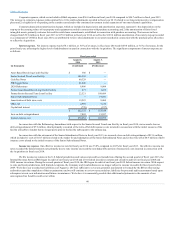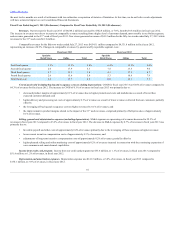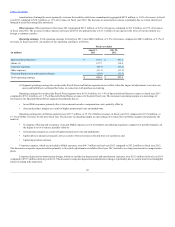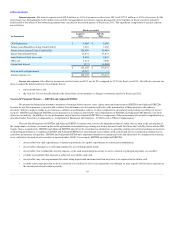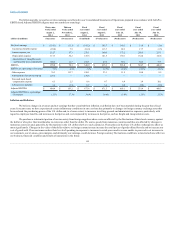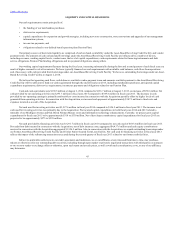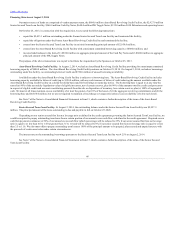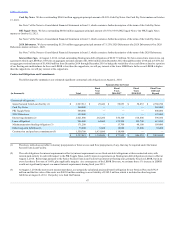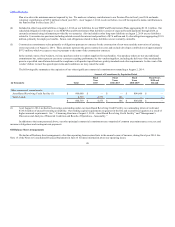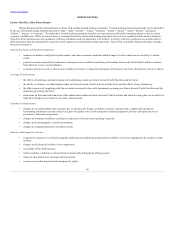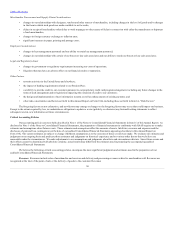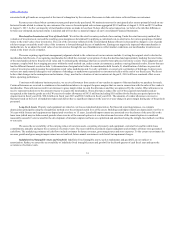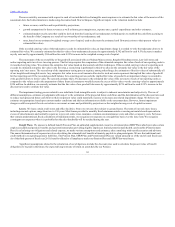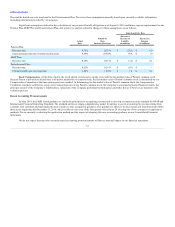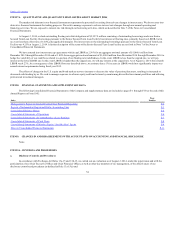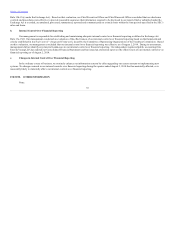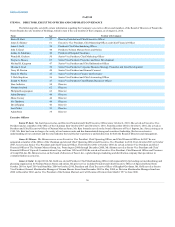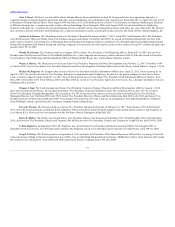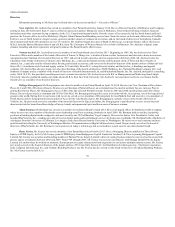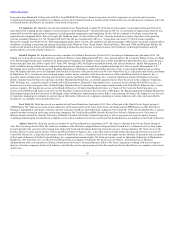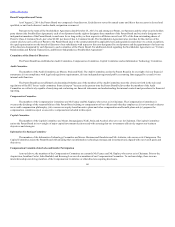Neiman Marcus 2013 Annual Report Download - page 52
Download and view the complete annual report
Please find page 52 of the 2013 Neiman Marcus annual report below. You can navigate through the pages in the report by either clicking on the pages listed below, or by using the keyword search tool below to find specific information within the annual report.
Table of Contents
Merchandise Procurement and Supply Chain Considerations
• changes in our relationships with designers, vendors and other sources of merchandise, including changes in the level of goods and/or changes
in the form in which such goods are made available to us for resale;
• delays in receipt of merchandise ordered due to work stoppages or other causes of delay in connection with either the manufacture or shipment
of such merchandise;
• changes in foreign currency exchange or inflation rates;
• significant increases in paper, printing and postage costs;
Employee Considerations
• changes in key management personnel and our ability to retain key management personnel;
• changes in our relationships with certain of our buyers or key sales associates and our ability to retain our buyers or key sales associates;
Legal and Regulatory Issues
• changes in government or regulatory requirements increasing our costs of operations;
• litigation that may have an adverse effect on our financial results or reputation;
Other Factors
• terrorist activities in the United States and elsewhere;
• the impact of funding requirements related to our Pension Plan;
• our ability to provide credit to our customers pursuant to our proprietary credit card program arrangement, including any future changes in the
terms of such arrangement and/or legislation impacting the extension of credit to our customers;
• the design and implementation of new information systems as well as enhancements of existing systems; and
• other risks, uncertainties and factors set forth in this Annual Report on Form 10-K, including those set forth in Item 1A, “Risk Factors.”
The foregoing factors are not exhaustive, and new factors may emerge or changes to the foregoing factors may occur that could impact our business.
Except to the extent required by law, we undertake no obligation to update or revise (publicly or otherwise) any forward-looking statements to reflect
subsequent events, new information or future circumstances.
Our accounting policies are more fully described in Note 1 of the Notes to Consolidated Financial Statements in Item 15 of this Annual Report. As
disclosed in Note 1 of the Notes to Consolidated Financial Statements, the preparation of financial statements in conformity with GAAP requires us to make
estimates and assumptions about future events. These estimates and assumptions affect the amounts of assets, liabilities, revenues and expenses and the
disclosure of gain and loss contingencies at the date of our audited Consolidated Financial Statements appearing elsewhere in this Annual Report on
Form 10-K. Our current estimates are subject to change if different assumptions as to the outcome of future events were made. We evaluate our estimates and
judgments on an ongoing basis and predicate those estimates and judgments on historical experience and on various other factors that we believe are
reasonable under the circumstances. We make adjustments to our assumptions and judgments when facts and circumstances dictate. Since future events and
their effects cannot be determined with absolute certainty, actual results may differ from the estimates used in preparing the accompanying audited
Consolidated Financial Statements.
We believe the following critical accounting policies encompass the more significant judgments and estimates used in the preparation of our
audited Consolidated Financial Statements.
Revenues. Revenues include sales of merchandise and services and delivery and processing revenues related to merchandise sold. Revenues are
recognized at the later of the point of sale or the delivery of goods to the customer. Revenues
50


